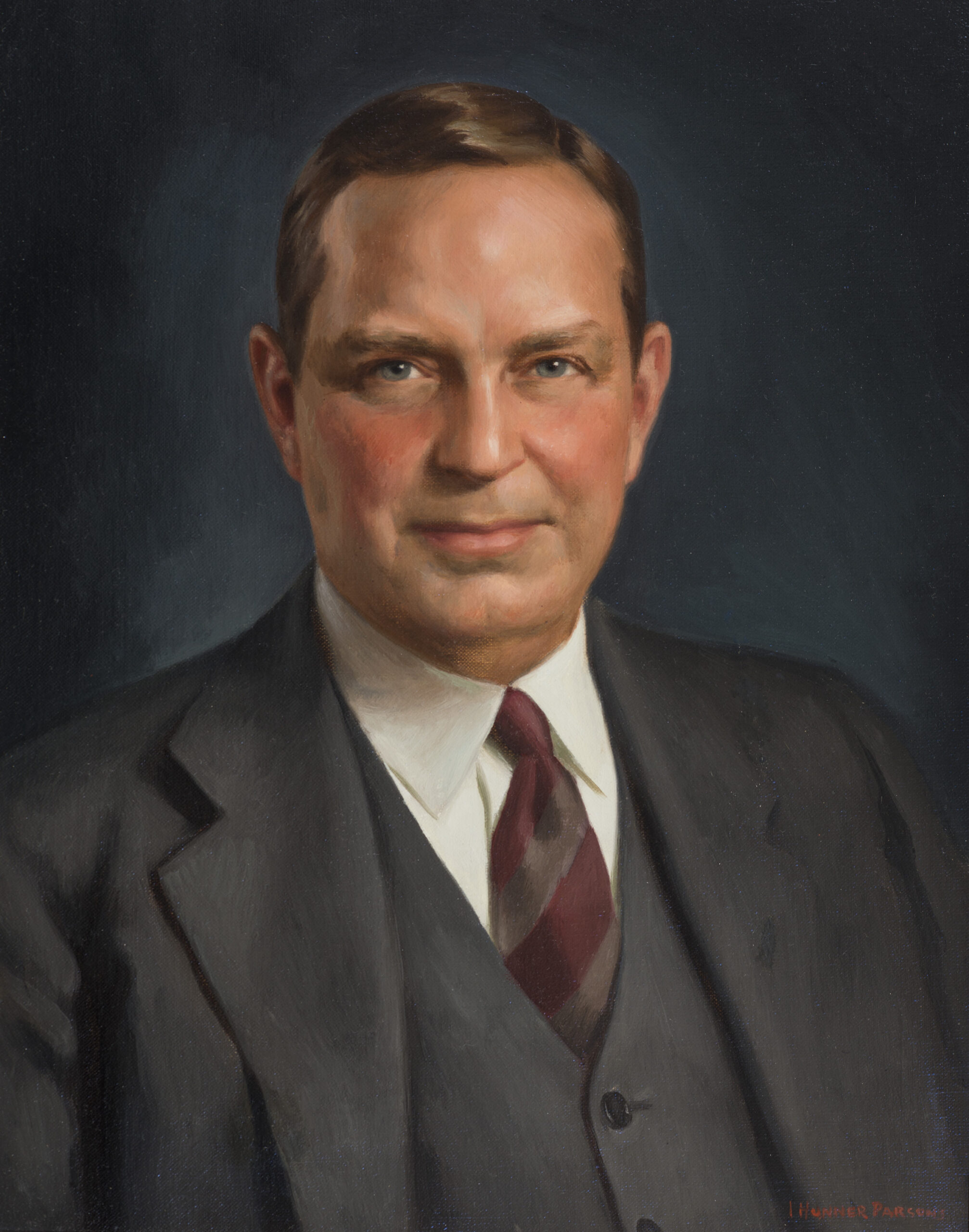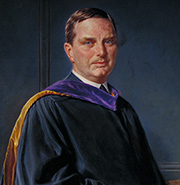Walter Edward Dandy

Walter Edward Dandy
- Artist:
- Isabella Hunner Parsons
- Date:
- Unknown
- Medium:
- Oil on canvas
- Dimensions:
- 19.5 x 15.5 inches
Walter Edward Dandy
1886-1946
Dandy, a pioneer in the development of neurosurgery and longtime faculty member at Johns Hopkins, was born in Sedalia, Missouri. He received his A.B. in 1907 from the University of Missouri and his M.D. in 1910 from the Johns Hopkins University School of Medicine. Dandy spent a year working under Harvey Cushing in the Hunterian Laboratory of Experimental Medicine before beginning his internship and residency at The Johns Hopkins Hospital.
He joined the faculty of the Johns Hopkins University School of Medicine in 1914 and remained there until his death. In 1923, Dandy created a 24-hour specialized nursing unit for critically ill neurosurgical patients that is considered a forerunner of present-day intensive care units.
One of his most important contributions to neurosurgery was the method of air contrast ventriculography, where cerebrospinal fluid is replaced by air to form X-ray images of the ventricular spaces within the brain. This technique was successful in revealing lesions and defects in the brain. Dandy also pioneered advances in operations for Ménière’s disease and glossopharyngeal neuralgia, and published studies showing the involvement of protruding discs in sciatic pain. In addition, he performed revolutionary surgeries that clipped aneurysms, treating these malformations by cutting off their blood supply. His novel approach launched new treatments for the sometimes deadly conditions that affect the brain’s blood circulation.
During his forty-year medical career, Dandy published five books and more than 160 peer-reviewed articles. While conducting a full-time neurosurgical practice he performed nearly 1,000 operations per year in the most active phase of his career. He was recognized as a remarkably fast and particularly dexterous surgeon.
In November, 2011, the Walter E. Dandy Neurosurgical Society was founded in St. Louis, Missouri in recognition of his pioneering contributions to the field.
Additional Portrait(s) of Walter Edward Dandy
"*" indicates required fields

